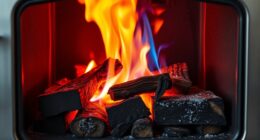Let me demonstrate the simplest method for installing a wood stove pipe through a cathedral ceiling. Believe me, it’s easier than it may seem.
With a few simple steps and the right materials, you’ll have your wood stove pipe up and running in no time.
In this article, I’ll walk you through the process, ensuring safety and proper ventilation along the way.
So let’s get started and make your wood stove dreams a reality!
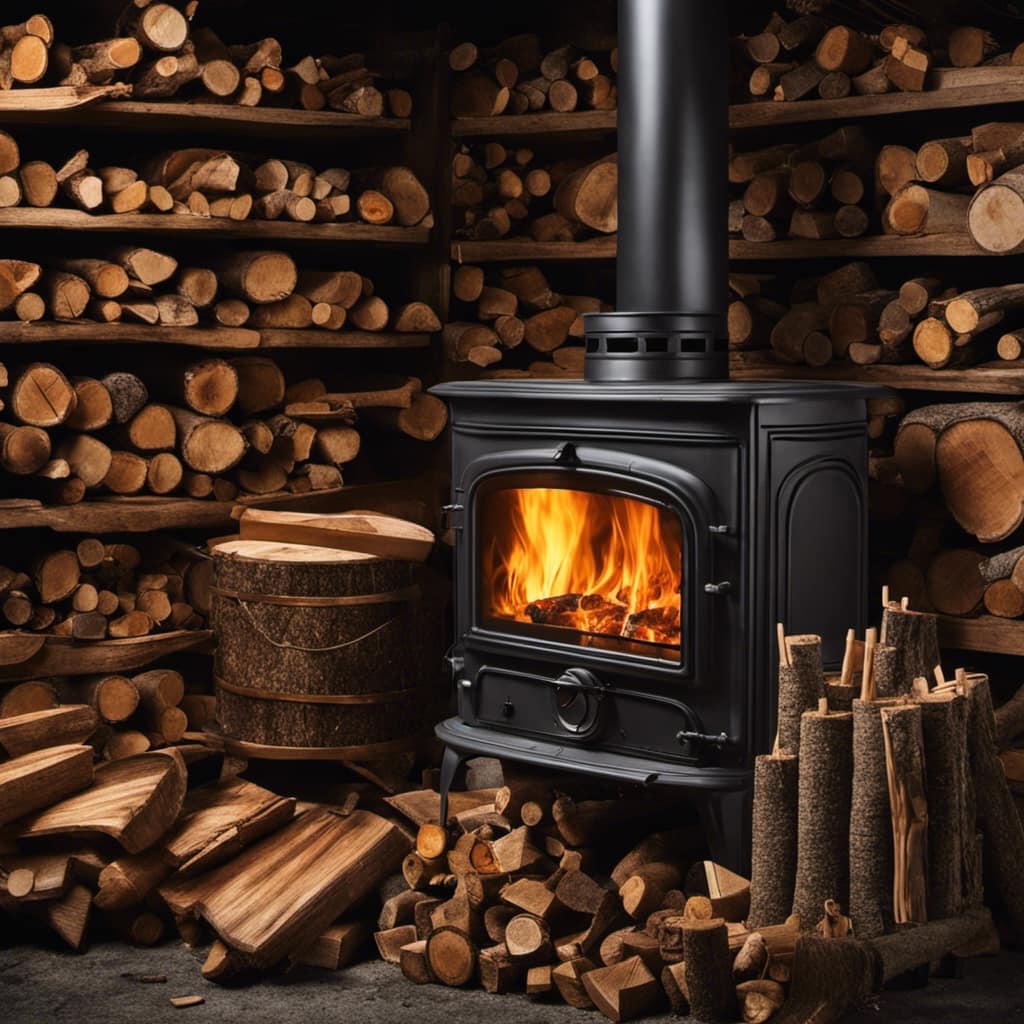
Key Takeaways
- Inspect the ceiling joists and address any structural issues before installation
- Measure the flue size of the wood stove and choose between single-wall and double-wall stove pipe
- Design the layout of the stove and pipe, measuring clearance from stove to nearby walls/ceilings and combustible materials
- Transition to chimney pipe or insulated double-wall pipe in the attic, ensuring proper ventilation and following building codes and regulations
Evaluating the Cathedral Ceiling Structure
I’m carefully examining the structure of the cathedral ceiling to determine the best way to install the wood stove pipe. Evaluating the structural integrity and assessing the load capacity are crucial steps in ensuring a safe and successful installation.
Firstly, I inspect the ceiling joists to ensure they’re in good condition and can support the weight of the wood stove pipe. I check for any signs of damage, such as cracks or sagging, which could indicate a weakened structure. If any issues are found, it’s important to address them before proceeding with the installation.
Next, I evaluate the spacing between the ceiling joists. This is important because it determines the distance between the supports for the wood stove pipe. The pipe must be adequately supported to prevent any sagging or movement.
Additionally, I consider the type of material used for the cathedral ceiling. Different materials have varying load capacities, so it’s essential to determine if the ceiling can safely support the weight of the wood stove pipe and the components attached to it.
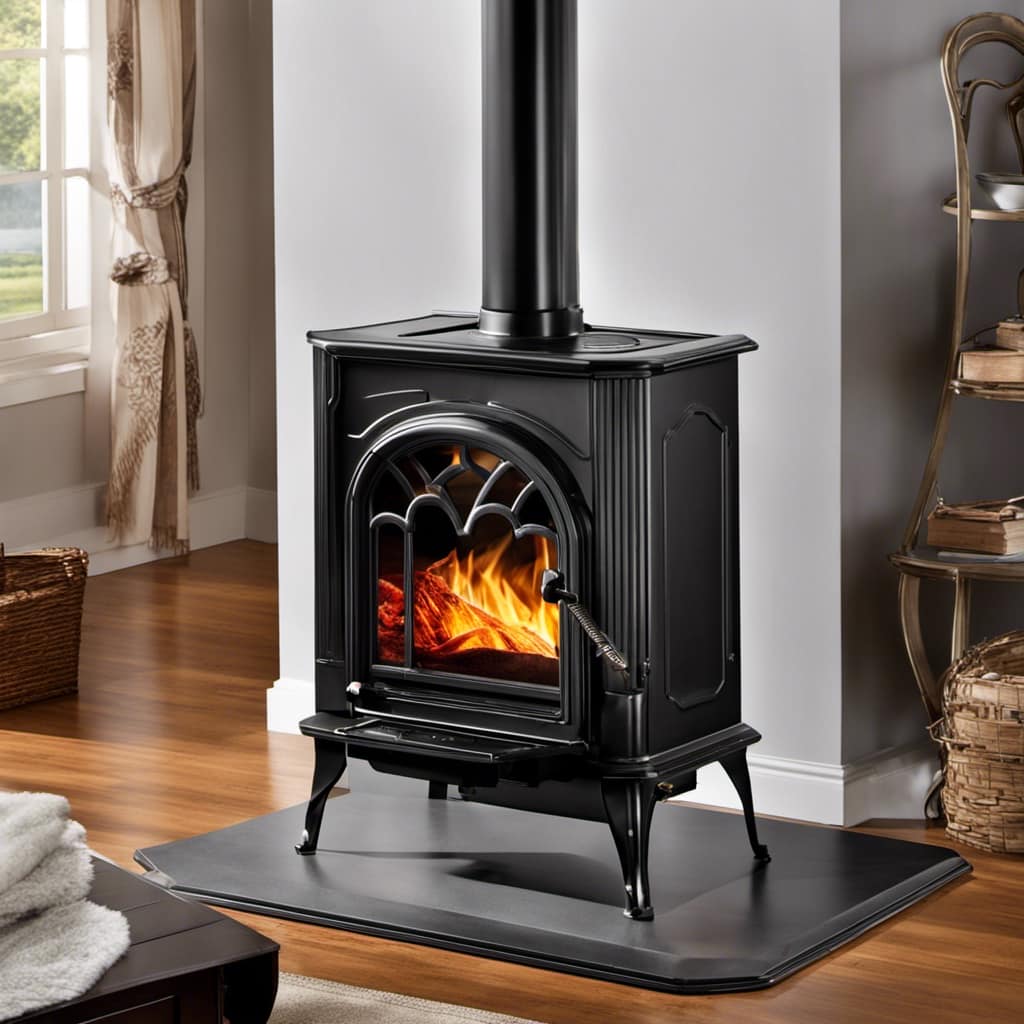
Selecting the Right Wood Stove Pipe and Components
The most important factor when choosing the proper components for a wood stove pipe installation in a cathedral ceiling is ensuring they’re compatible with the flue size and type of stove.
Here are the steps to follow when selecting the right wood stove pipe and components for your installation:
Determine the flue size: Measure the inner diameter of the flue opening on your wood stove. This will help you choose the correct size of stove pipe.
Select the type of stove pipe: There are two main types of stove pipe: single-wall and double-wall. Single-wall stove pipe is suitable for most installations, while double-wall pipe provides extra insulation and is required in some situations.

Single-wall stove pipe: Made of a single layer of steel, this type of pipe is affordable and easy to install. It should be used with proper clearance to combustible materials.
Double-wall stove pipe: Consists of an inner and outer layer with insulation in between. This type of pipe offers better heat retention and reduces the risk of creosote buildup.
By choosing the right wood stove pipe and components, you can ensure proper airflow and maintain optimal performance of your wood stove.
Now, let’s move on to planning the installation process.
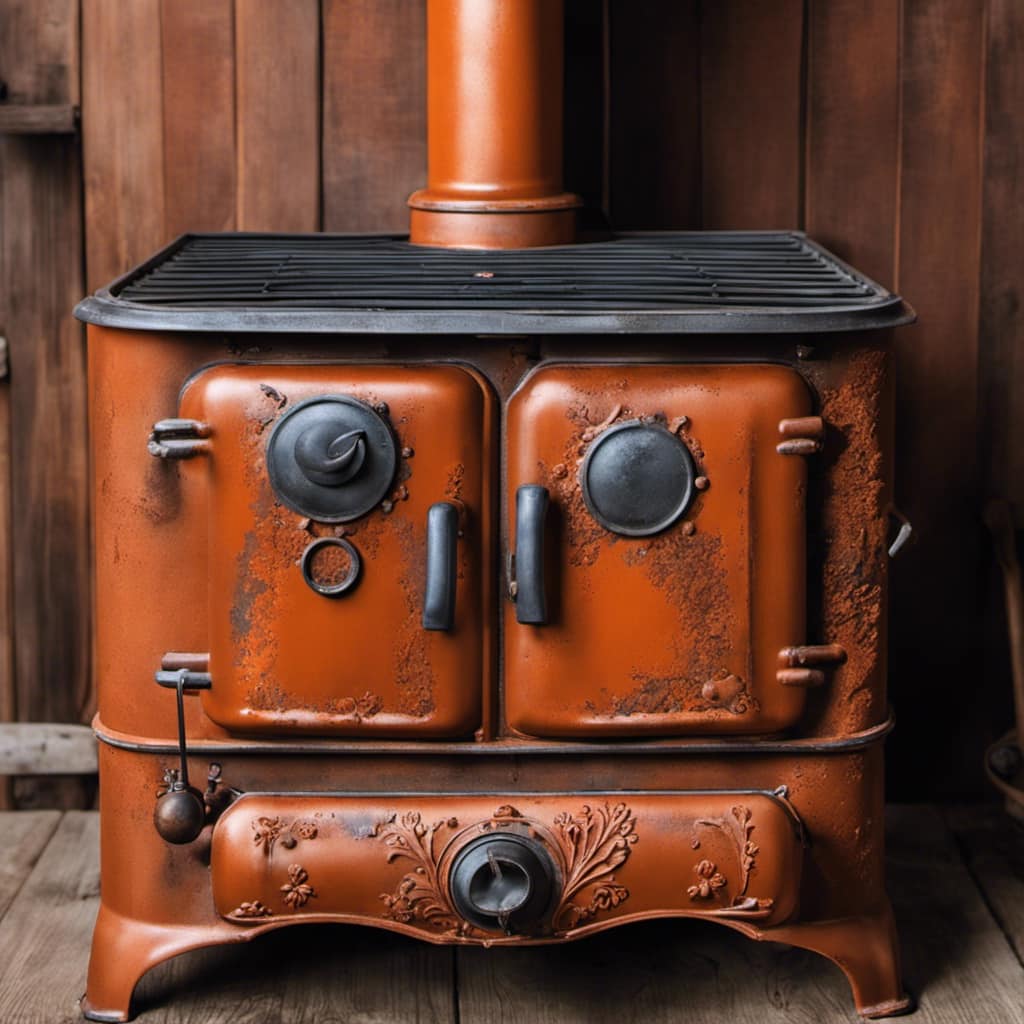
Transition: Once you’ve selected the appropriate wood stove pipe and components, the next step is to plan the installation process.
Planning the Installation Process
To ensure a smooth installation process, I will create a detailed plan that outlines the necessary steps and materials needed. The first step in planning the installation of a wood stove pipe through a cathedral ceiling is to design the layout. This involves determining the best location for the stove, taking into consideration factors such as proximity to combustible materials and ease of access for cleaning and maintenance. Once the layout is determined, the next step is to measure the clearance required for the stove pipe. This includes measuring the distance from the stove to any nearby walls or ceilings, as well as any combustible materials, to ensure proper clearance and reduce the risk of fire.
To convey a deeper understanding of the planning process, I have created the following table:
| Step | Description |
|---|---|
| 1 | Design the layout of the stove and pipe |
| 2 | Measure clearance from stove to nearby walls/ceilings |
| 3 | Measure clearance from stove to combustible materials |
| 4 | Determine necessary pipe length and components |
| 5 | Create a detailed plan outlining all measurements and materials |
Step-by-Step Guide to Installing the Wood Stove Pipe
As I carefully measure the clearance requirements, I ensure the safe and efficient installation of the stove pipe. Installing wood stove pipe through a cathedral ceiling requires precision and attention to detail. Here is a step-by-step guide to successfully completing the chimney installation:
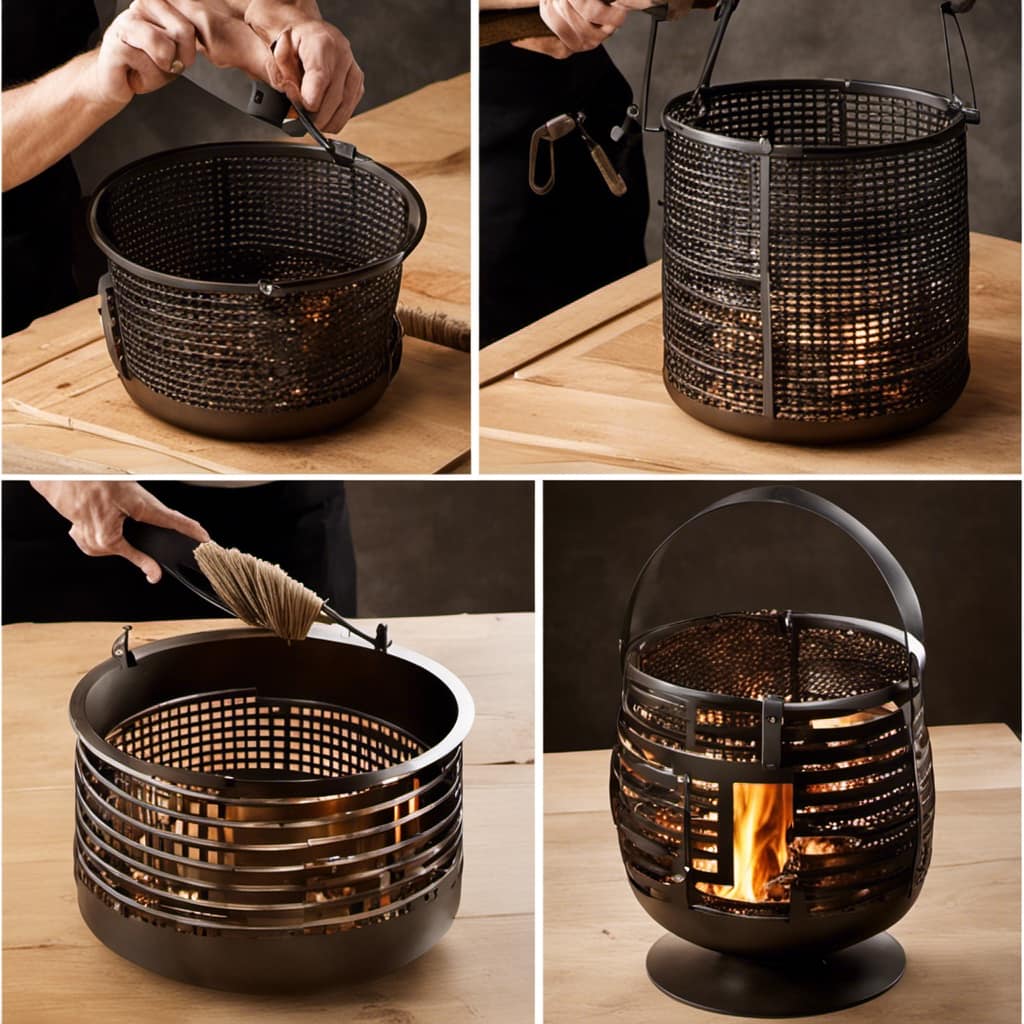
Plan the route: Determine the best path for the stove pipe to travel through the cathedral ceiling. Consider the structural integrity of the ceiling and any obstructions that may be in the way.
Gather the necessary materials: Acquire all the components needed for the installation, including the stove pipe, chimney cap, support brackets, and fireproof insulation.
Prepare the ceiling: Cut a hole in the ceiling that matches the diameter of the stove pipe. Install a firestop or thimble to protect the surrounding materials from heat.
Install the support brackets: Secure the support brackets to the ceiling joists, ensuring they’re properly aligned and spaced according to the manufacturer’s instructions.
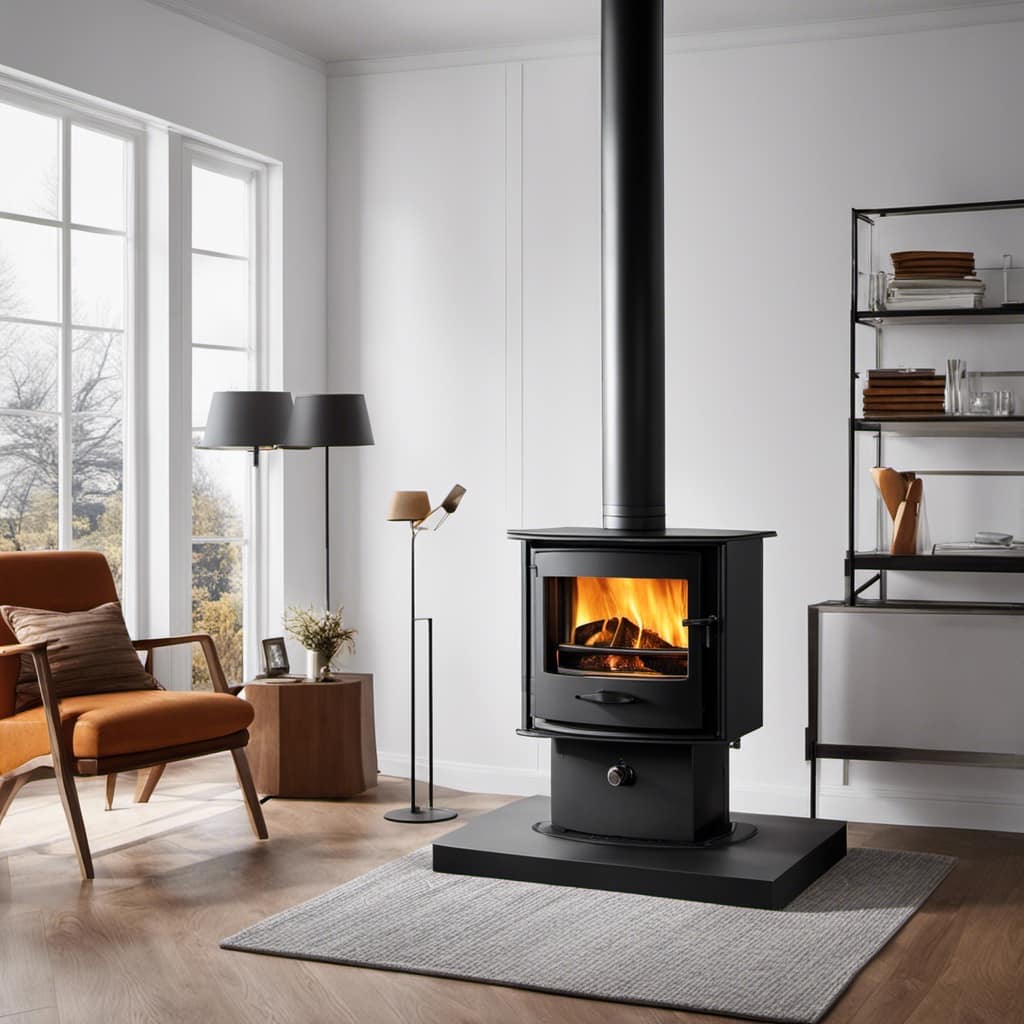
Connect the stove pipe: Slide the stove pipe sections together, making sure they fit tightly. Fasten the pipe to the support brackets using appropriate screws or clamps.
Insulate the pipe: Wrap fireproof insulation around the stove pipe to prevent heat transfer and protect the surrounding materials.
Install the chimney cap: Attach the chimney cap to the top of the stove pipe, ensuring it’s securely fastened and properly sealed.
Ensuring Safety and Proper Ventilation
I prioritize safety and proper ventilation when installing the stove pipe. This is crucial to prevent fire hazards and ensure the efficient operation of the wood stove. Regular maintenance is also of utmost importance to keep the stove and chimney in good working condition.
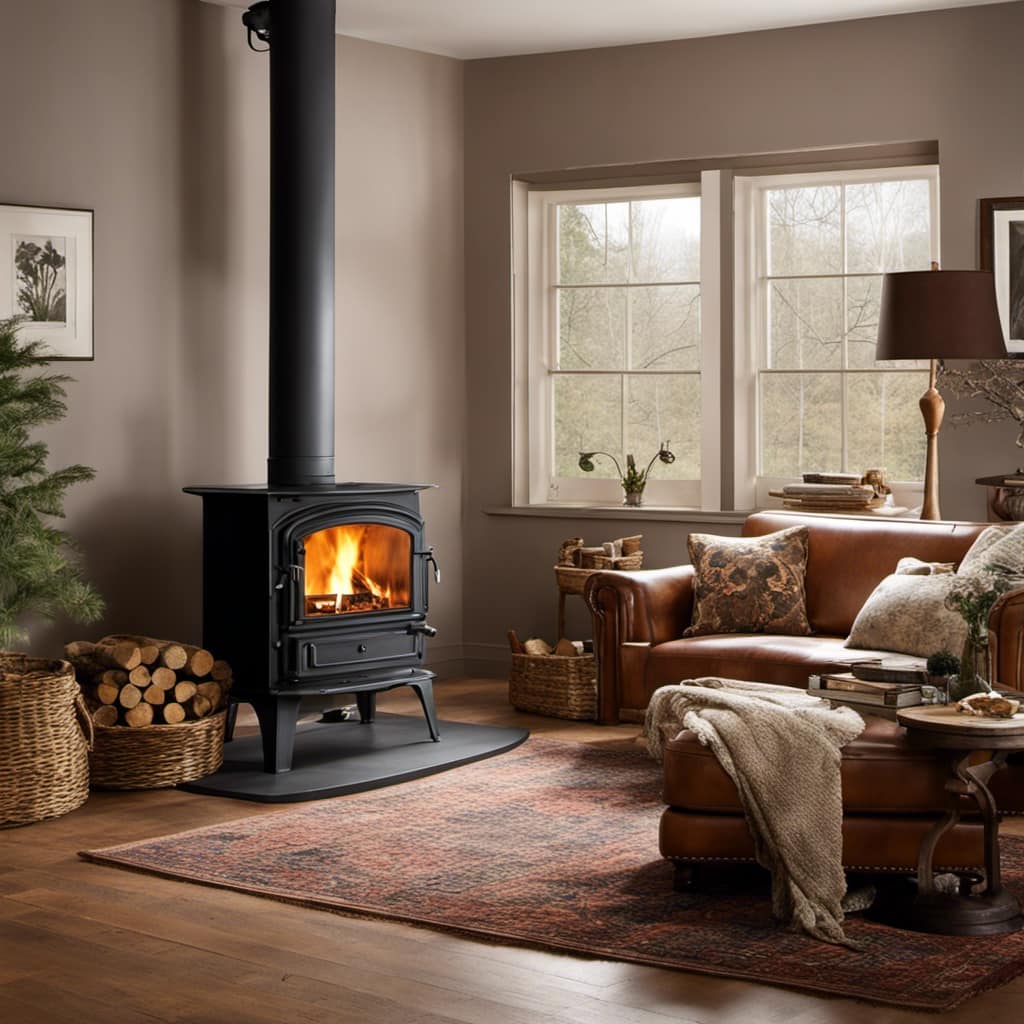
Begin by measuring the distance from the stove to the ceiling. This will determine the length of the stove pipe needed.
Install a firestop or thimble at the point where the pipe penetrates the ceiling. This will create a barrier to prevent heat transfer and minimize the risk of fire.
Connect the stove pipe to the collar on the stove, ensuring a tight fit. Use high-temperature sealant or metal tape to secure the joints and prevent any air leakage.
Extend the stove pipe vertically through the ceiling, following the manufacturer’s guidelines for clearances. Maintain a minimum distance between the pipe and any combustible materials.
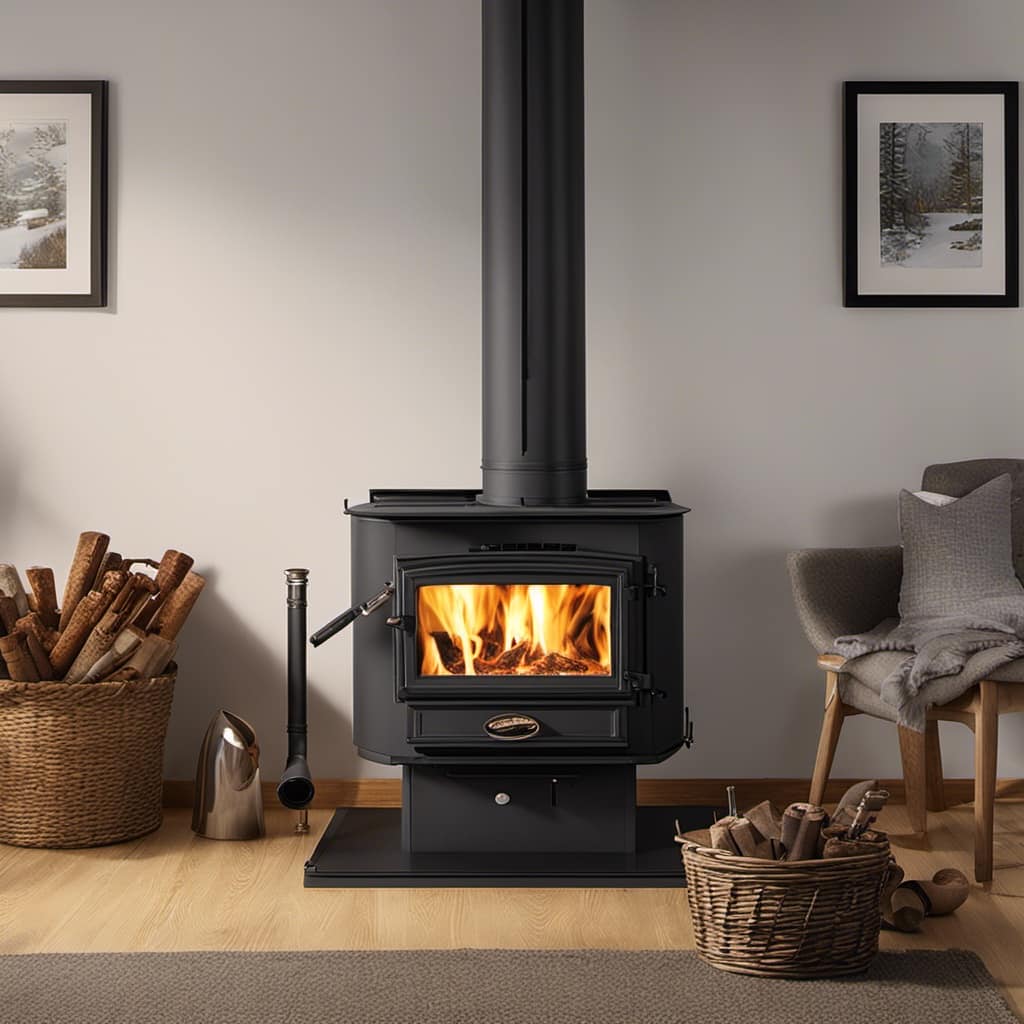
Install a support bracket to secure the pipe in place and prevent sagging.
Once the pipe reaches the attic, transition to a chimney pipe or insulated double-wall pipe for proper ventilation.
Inspect the stove pipe regularly for any signs of damage or blockage. Clean the chimney annually to remove creosote buildup.
Frequently Asked Questions
How Much Does It Cost to Install a Wood Stove Pipe Through a Cathedral Ceiling?
Installing a wood stove pipe through a cathedral ceiling can be a complex process. The cost of installation will depend on various factors such as the length of the pipe, the materials used, and any additional components required.
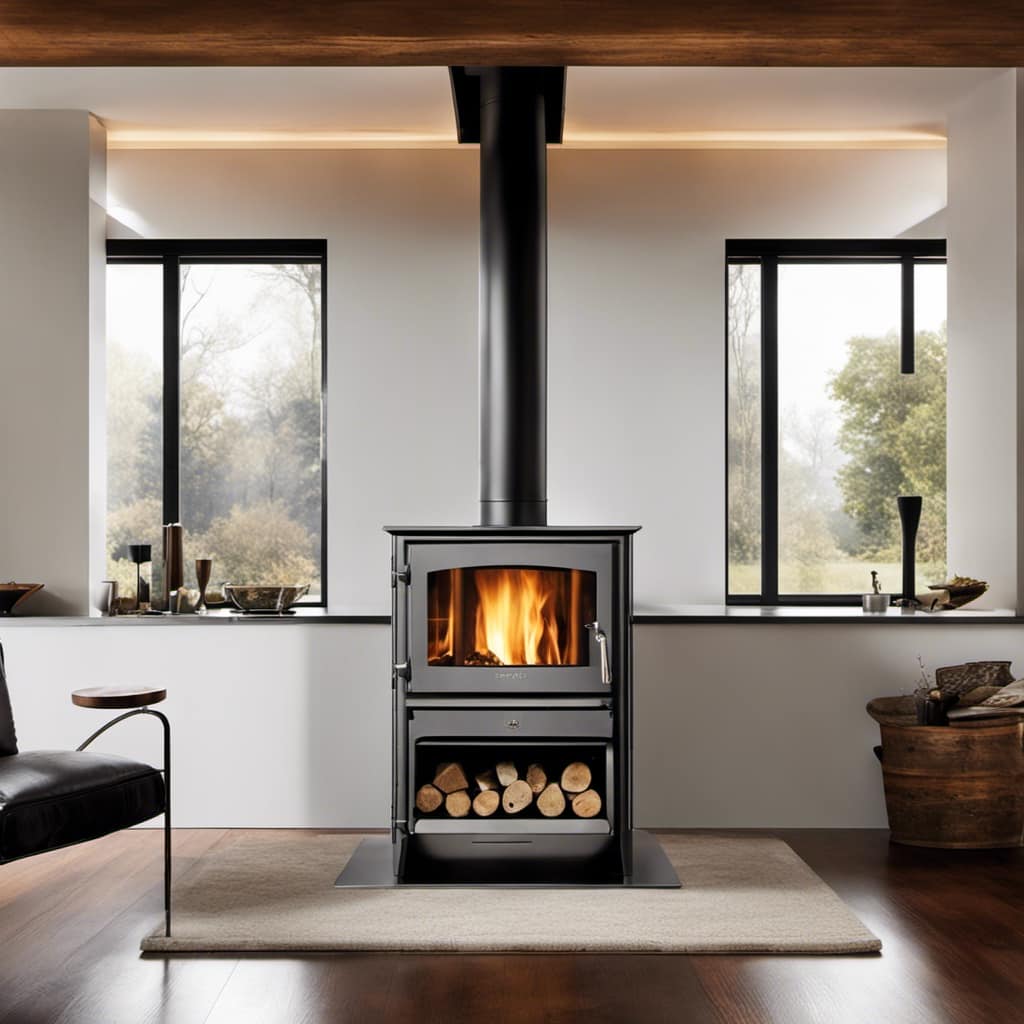
It’s important to hire a professional for this task to ensure proper installation and safety. The installation process typically involves cutting a hole in the ceiling, securing the pipe, and sealing any gaps to prevent leaks.
Can I Install a Wood Stove Pipe Through a Cathedral Ceiling Myself, or Do I Need to Hire a Professional?
I can install a wood stove pipe through a cathedral ceiling myself, but it’s important to take proper safety precautions.
First, I need to ensure I have the right tools and materials.
Then, I should carefully measure and mark the location for the pipe.
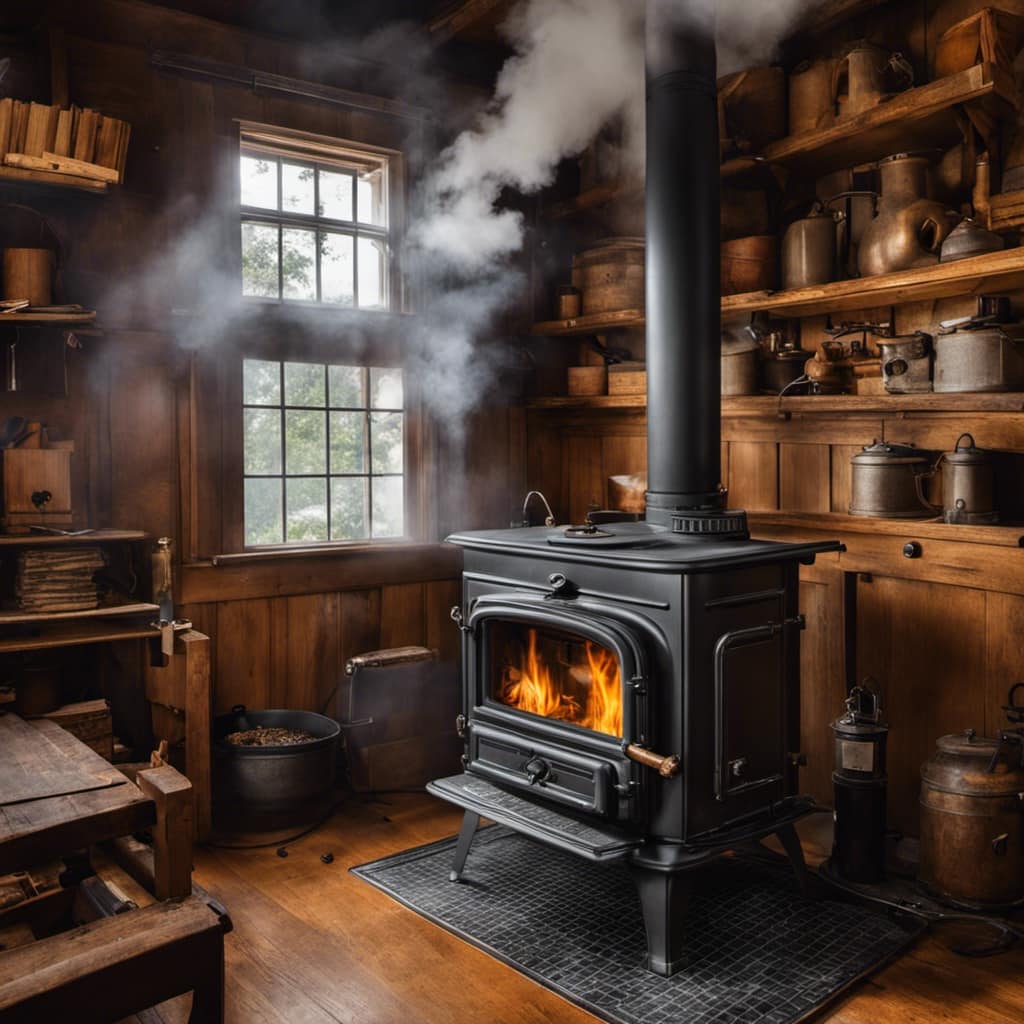
Next, I’ll need to cut a hole in the ceiling and install a ceiling support box.
Are There Any Building Codes or Regulations That I Need to Follow When Installing a Wood Stove Pipe Through a Cathedral Ceiling?
Building code requirements and safety regulations must be followed when installing a wood stove pipe through a cathedral ceiling. It’s crucial to ensure that the installation meets all necessary standards to prevent any potential hazards.
These regulations may vary depending on your location, so it’s essential to research and consult with local authorities or professionals to ensure compliance.
Adhering to these codes and regulations will help ensure the safety and efficiency of your wood stove pipe installation.
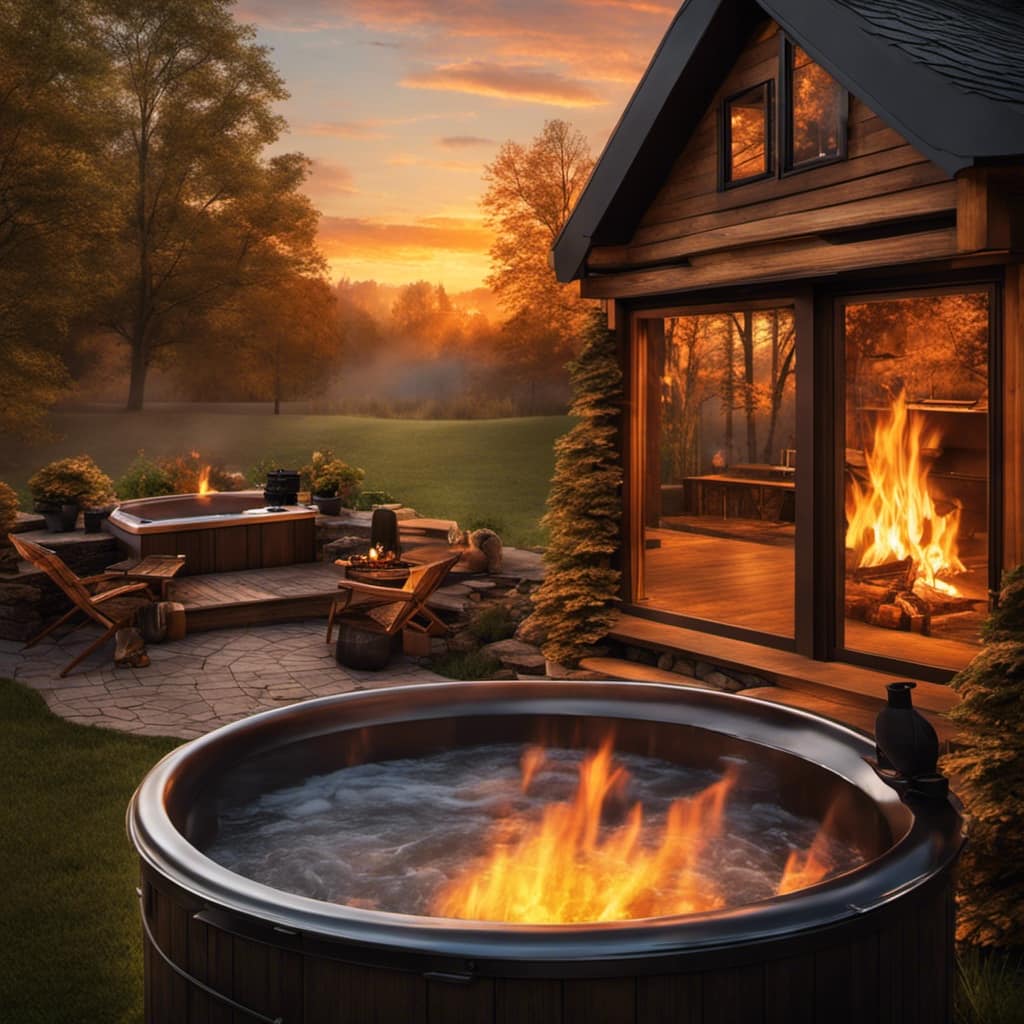
Can I Install a Wood Stove Pipe Through a Cathedral Ceiling if I Have a Metal Roof?
Installing a wood stove pipe through a cathedral ceiling with a metal roof requires careful consideration of safety precautions. It’s important to ensure proper clearance from combustible materials, use appropriate fireproof materials, and follow building codes and regulations.
Begin by measuring and marking the location for the stove pipe, then cut a hole in the ceiling and roof. Install a support box and secure the pipe using insulated brackets.
Seal all joints and connections to prevent leaks and maintain efficiency.
What Should I Do if I Encounter Any Obstacles, Such as Electrical Wires or Plumbing Pipes, When Installing the Wood Stove Pipe Through a Cathedral Ceiling?
When encountering obstacles like electrical wires or plumbing pipes during wood stove pipe installation through a cathedral ceiling, it’s crucial to prioritize safety.
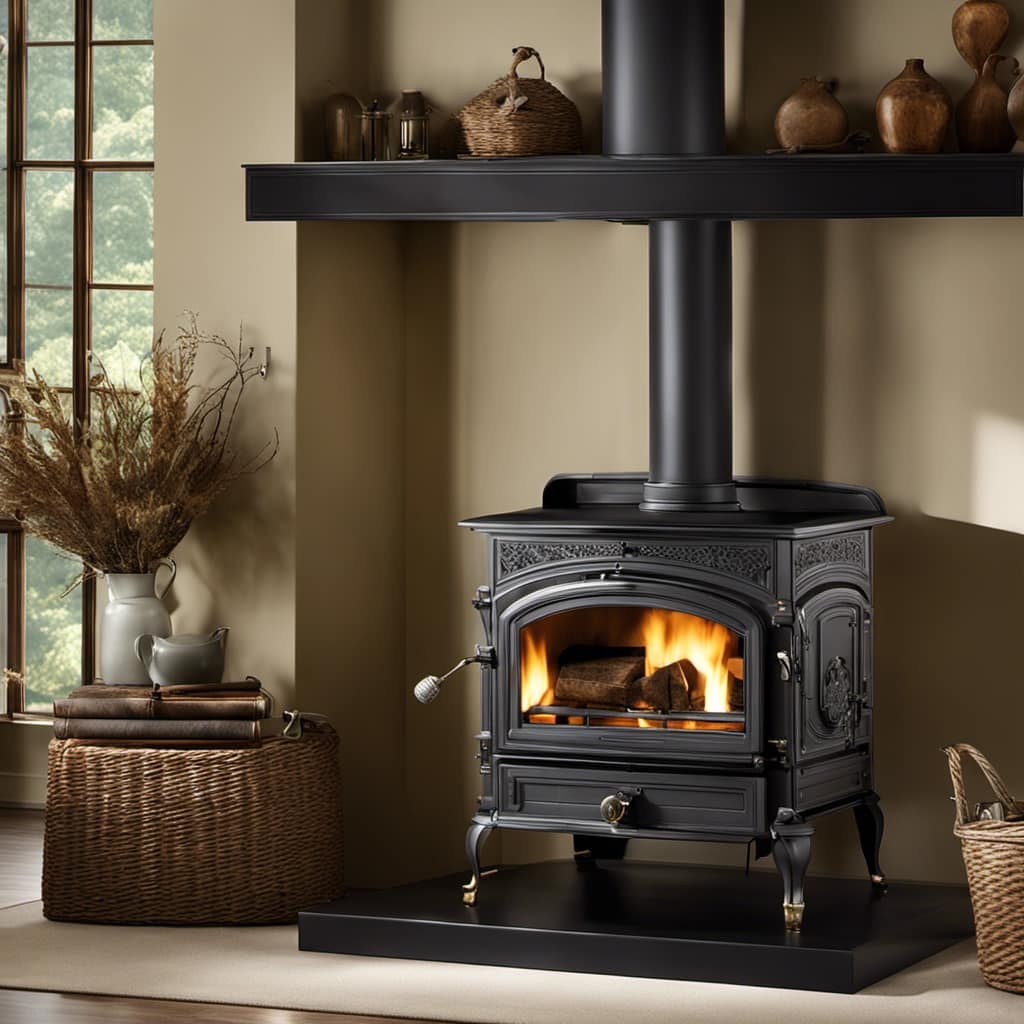
First, turn off the power and shut off the water supply.
Next, carefully assess the situation and plan accordingly. If necessary, consult a professional to safely reroute or relocate any obstacles.
Always wear protective gear and use caution when working near electrical or plumbing components.
Safety should always be the top priority in these situations.
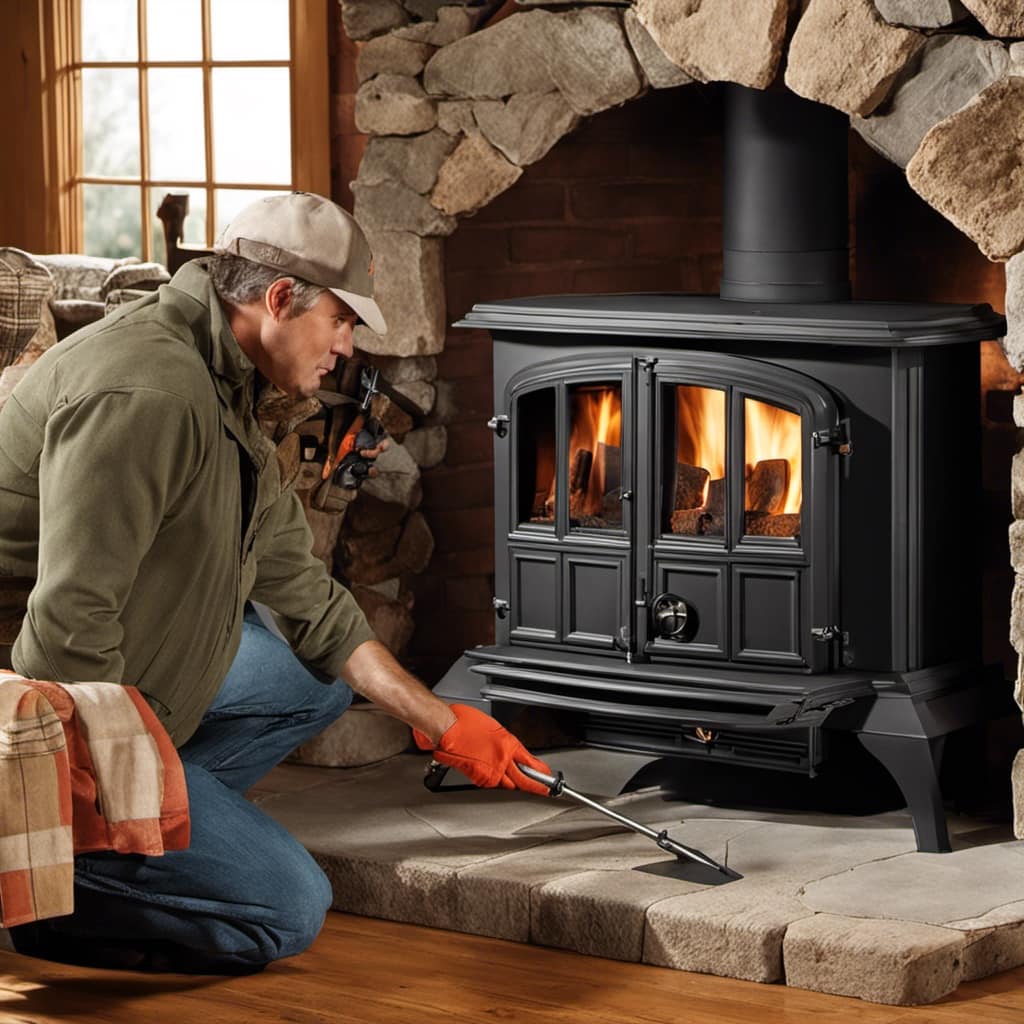
Is the Installation Process Different for a Cathedral Ceiling vs. a Regular Ceiling?
The installation process for a wood stove pipe in a cathedral ceiling does differ from a regular ceiling. Due to the unique angles and steep slopes of cathedral ceilings, it requires special attention and equipment to properly install the wood stove pipe while ensuring safety and efficiency.
Conclusion
After evaluating the cathedral ceiling structure and selecting the appropriate wood stove pipe and components, planning the installation process is crucial.
Following a step-by-step guide ensures a safe and proper installation.
By taking the necessary precautions and ensuring proper ventilation, you can enjoy the warmth and comfort of your wood stove while maintaining the integrity of your cathedral ceiling.
Growing up surrounded by the vast beauty of nature, Sierra was always drawn to the call of the wild. While others sought the comfort of the familiar, she ventured out, embracing the unpredictable and finding stories in the heartbeat of nature.
At the epicenter of every remarkable venture lies a dynamic team—a fusion of diverse talents, visions, and passions. The essence of Best Small Wood Stoves is crafted and refined by such a trio: Sierra, Logan, and Terra. Their collective expertise has transformed the platform into a leading authority on small wood stoves, radiating warmth and knowledge in equal measure.











